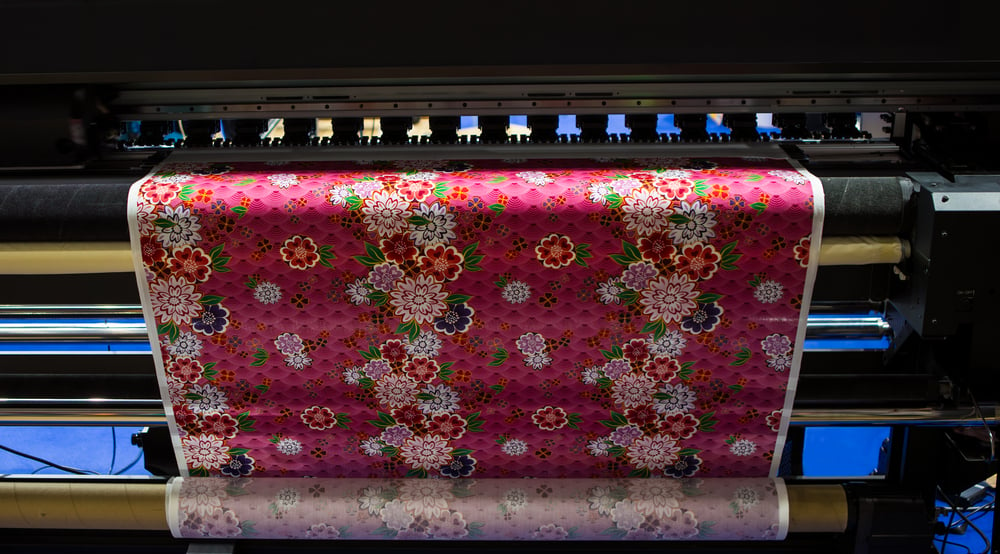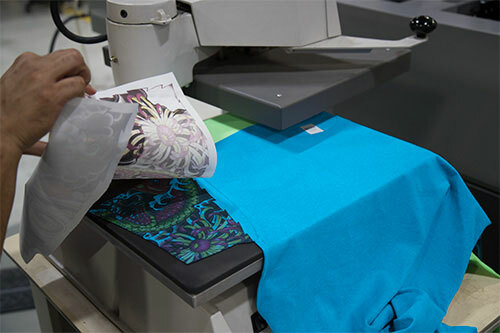Why DTF Printing is the Future of Custom-made Clothing Production
Why DTF Printing is the Future of Custom-made Clothing Production
Blog Article
Advancements in DTF Printing: Exactly How It's Transforming the Market
The textile printing industry is undergoing a significant transformation, driven by the cutting-edge developments in Direct-to-Film (DTF) modern technology. With superior ink formulations, boosted film and adhesive innovations, and the combination of automation, DTF printing supplies vibrant, sturdy prints on a range of textiles, meeting the raising demand for customization.
Advancements in DTF Modern Technology
Progressing quickly, DTF (Direct-to-Film) printing modern technology has actually undertaken considerable improvements that are revolutionizing the fabric market. Among one of the most notable advancements is the improvement in print quality. Modern DTF printers use sophisticated ink formulas that lead to vivid, sturdy prints with high resolution and color accuracy. These inks are especially crafted for compatibility with different material kinds, making certain regular quality regardless of the material.

Additionally, advancements in movie and glue modern technologies have boosted the total application process. New films use much better elasticity and adhesion, boosting the resilience and washability of the published designs - sublimation printing. This guarantees that the prints maintain their stability and vibrancy even after numerous laundries
Last but not least, ecological considerations have actually triggered the development of green DTF services. Suppliers are increasingly embracing lasting techniques, such as using recyclable films and water-based inks, lining up with international initiatives to lower the industry's eco-friendly footprint.
Benefits Over Traditional Methods
When comparing DTF printing to traditional methods such as display printing and direct-to-garment (DTG) printing, several unique advantages emerge. heat transfer vinyl printing. Among one of the most significant advantages is its flexibility in material compatibility. Unlike display printing, which often needs specific fabric types, DTF printing can be related to a broader variety of products, consisting of cotton, polyester, and blends, without endangering print high quality
One more significant benefit is cost-effectiveness, particularly for little to medium-sized orders. Typical screen printing comes to be economically practical just at higher volumes because of the arrangement costs entailed. On the other hand, DTF printing eliminates these configuration expenditures, making it more budget friendly for smaller sized sets and one-off layouts.
Furthermore, DTF printing stands out in toughness and washability. The prints generated are robust and keep their integrity via several wash cycles, surpassing DTG prints that may break or discolor in time. In addition, DTF printing supplies faster turn-around times. Without the requirement for extensive configuration, styles can be published and moved in a portion of the moment needed for screen printing.

Improved Design Capacities
DTF printing supplies boosted design capabilities that set it aside from standard printing techniques. This advancement permits a more comprehensive range of lively shades, intricate information, and nuanced gradients, giving designers with extraordinary adaptability. The procedure involves printing a layout onto a special movie, which is then moved to textile. This enables high-resolution prints that preserve quality and sharpness, also on facility patterns and little message.
Additionally, DTF printing sustains a vast variety of materials, including cotton, polyester, blends, and also non-textile substrates. This flexibility opens doors for creative applications in varied markets such as fashion, home decor, and promotional products. Unlike screen printing, which can be restricting because of color splitting up and stencil development, DTF printing simplifies the procedure, making photo-realistic and multi-color designs extra easily accessible.
In addition, DTF printing stands out in achieving regular color precision and vibrancy. This is vital for brand uniformity and meeting consumer expectations. The modern technology also sustains special results, such as glow-in-the-dark aspects and metallic finishes, better expanding creative possibilities. Essentially, DTF printing empowers developers to press the limits of imagination, supplying visually magnificent results that were formerly unattainable.
Price and Time Performance
Among the go to my blog remarkable advantages of DTF printing exists in its price and time efficiency, making it a favored selection for many companies. By getting rid of the demand for screen arrangements and extensive pre-production procedures, DTF printing substantially minimizes initial costs. Unlike typical approaches that need substantial investment in displays and arrangement times, DTF printing enables straight application onto various products with minimal prep work. This reduction in arrangement time converts right into faster production cycles, making it possible for companies to fulfill orders much more swiftly.
In addition, DTF printing stands out in generating short runs and personalized orders cost-effectively. The capability to create high-grade prints without the demand for large quantity dedications lessens waste and enhances resource allocation. This adaptability is especially useful for small companies and startups that may not have the capital to buy large production runs.
In terms of functional performance, DTF printing's structured workflow improves overall efficiency. Hence, DTF printing stands out as a transformative option in the printing sector.
Future Trends in DTF Printing
Preparing for future patterns in DTF printing discloses a landscape marked by fast technical improvements and raised market demand (Branded clothing). One substantial pattern is the assimilation of artificial knowledge (AI) and artificial intelligence formulas to maximize print high quality and simplify operations. AI-driven systems can anticipate prospective issues and adjust settings in real-time, ensuring constantly premium outcome
Additionally, advancements in environmentally friendly inks and lasting products are anticipated to gain traction. As environmental issues come to be much more pressing, the market is most likely to see a shift in the direction of non-toxic and naturally degradable inks, minimizing its ecological footprint.
Customization and personalization will likewise play an essential role. With the expanding customer demand for one-of-a-kind, individualized products, DTF printing technologies are developing to provide more elaborate and detailed modification alternatives. This fad is sustained by improved software application remedies that permit even more facility and imaginative layouts.
Last but not least, the assimilation of DTF printing with other digital platforms and e-commerce solutions will certainly come to be a lot more seamless. This connectivity will certainly enable organizations sublimation printing to supply on-demand printing solutions directly to consumers, better driving growth in the industry. These fads jointly highlight a future where DTF printing not only fulfills yet surpasses the developing needs of the marketplace.
Verdict

When comparing DTF printing to standard approaches such as display printing and direct-to-garment (DTG) printing, several unique benefits arise. Unlike screen printing, which usually requires particular textile kinds, DTF printing can be applied to a published here broader variety of materials, consisting of cotton, polyester, and blends, without endangering print top quality.
DTF printing supplies enhanced design capabilities that set it apart from conventional printing techniques. Hence, DTF printing stands out as a transformative remedy in the printing sector.
Technologies in DTF printing significantly enhance the textile printing sector by providing superior print quality, flexibility, and effectiveness.
Report this page